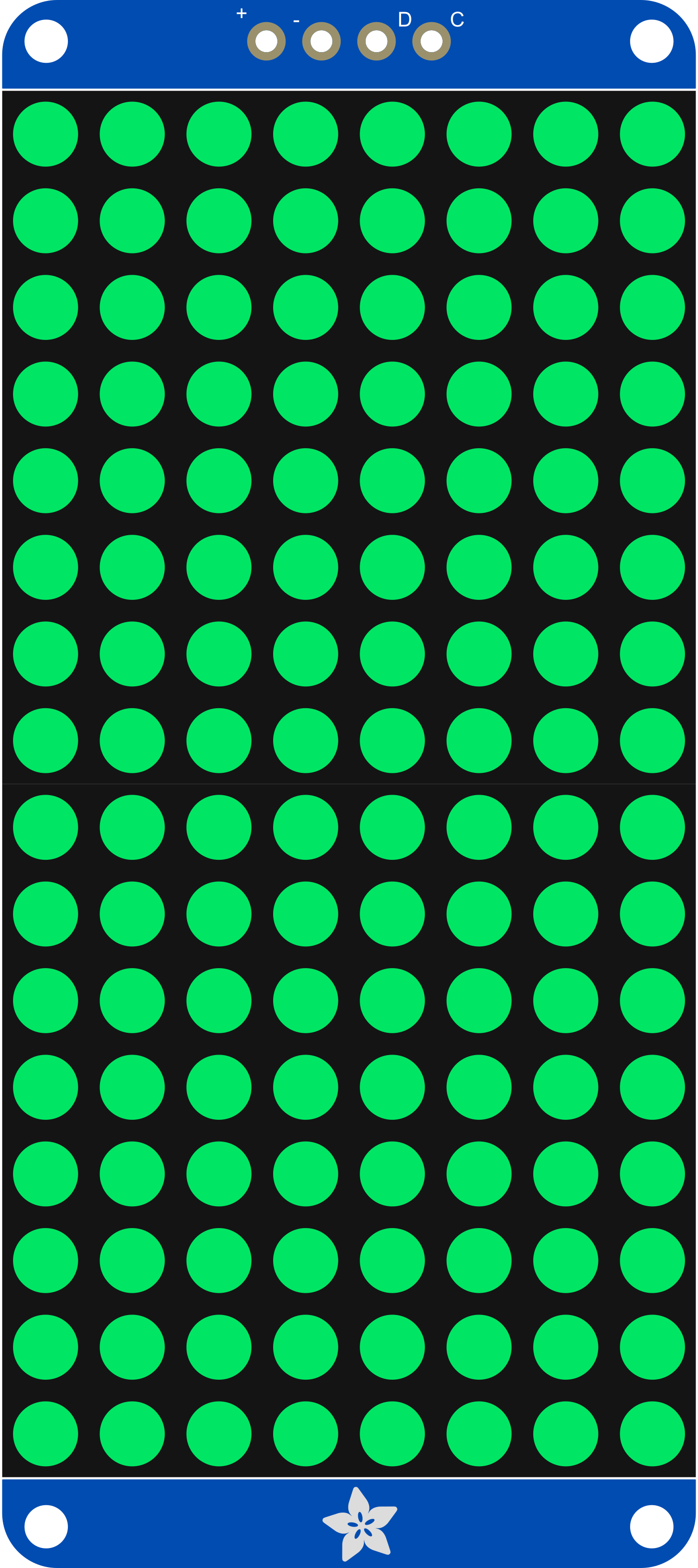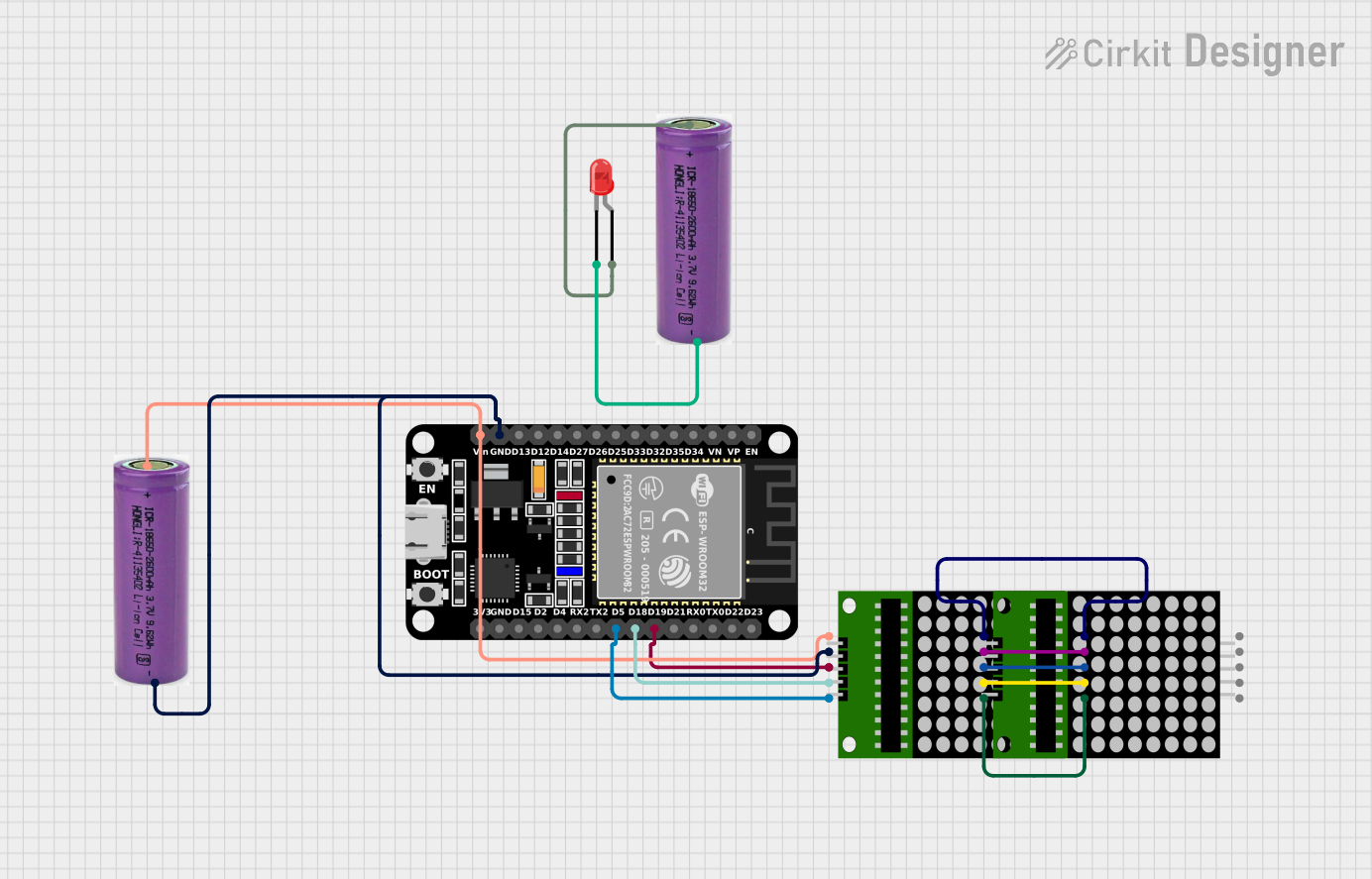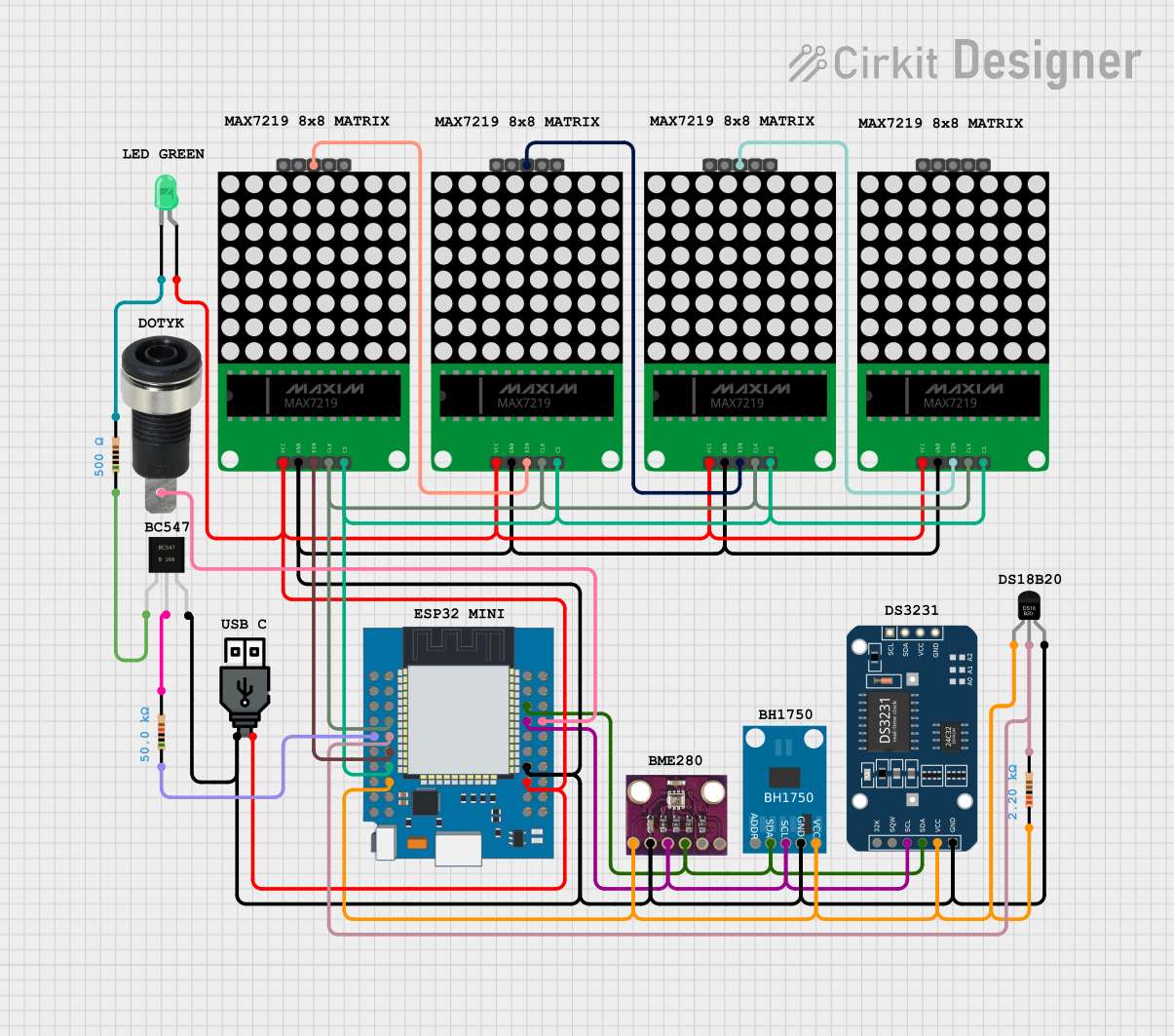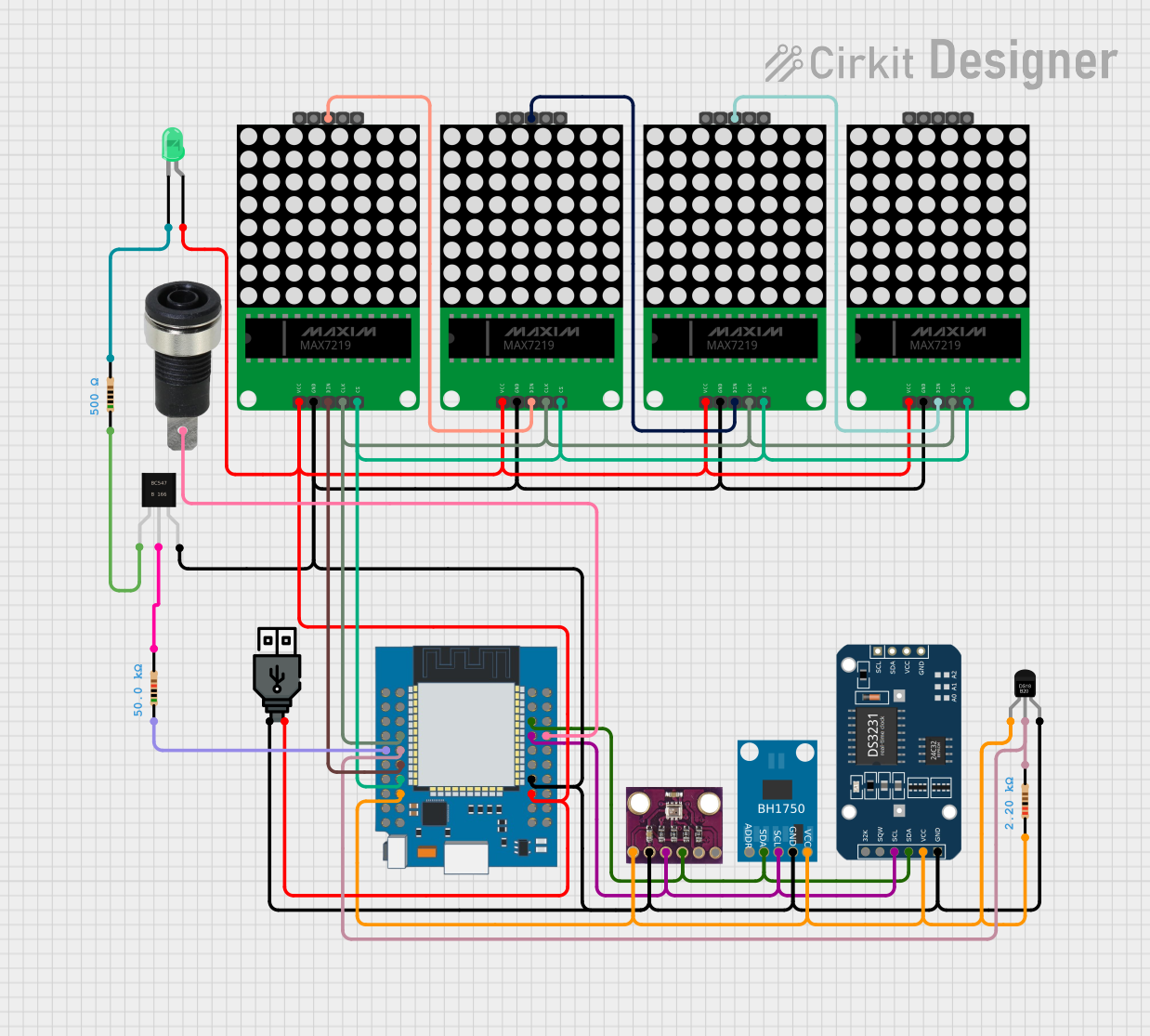
How to Use Adafruit 16x8 LED Matrix Backpack Pure Green: Examples, Pinouts, and Specs

 Design with Adafruit 16x8 LED Matrix Backpack Pure Green in Cirkit Designer
Design with Adafruit 16x8 LED Matrix Backpack Pure Green in Cirkit DesignerIntroduction
The Adafruit 16x8 LED Matrix Backpack Pure Green is a versatile and visually appealing display module designed for hobbyists and professionals alike. This LED matrix features 128 pure green LEDs arranged in a 16x8 grid, and it comes with an integrated backpack that simplifies connection to microcontrollers such as the Arduino UNO. Common applications include creating digital signage, displaying sensor data, creating simple games, or adding a visual interface to electronics projects.
Explore Projects Built with Adafruit 16x8 LED Matrix Backpack Pure Green

 Open Project in Cirkit Designer
Open Project in Cirkit Designer
 Open Project in Cirkit Designer
Open Project in Cirkit Designer
 Open Project in Cirkit Designer
Open Project in Cirkit Designer
 Open Project in Cirkit Designer
Open Project in Cirkit DesignerExplore Projects Built with Adafruit 16x8 LED Matrix Backpack Pure Green

 Open Project in Cirkit Designer
Open Project in Cirkit Designer
 Open Project in Cirkit Designer
Open Project in Cirkit Designer
 Open Project in Cirkit Designer
Open Project in Cirkit Designer
 Open Project in Cirkit Designer
Open Project in Cirkit DesignerTechnical Specifications
Key Technical Details
- Resolution: 16x8 (128 LEDs)
- LED Color: Pure Green
- Operating Voltage: 5V DC
- Communication: I2C interface
- I2C Addresses: 0x70 (default) - 0x77 (selectable with solder jumpers)
- Dimensions: 1.2" x 3.0" (31mm x 76mm)
Pin Configuration and Descriptions
| Pin | Description |
|---|---|
| GND | Ground connection |
| VCC | Power supply (4.5V to 5.5V) |
| SDA | I2C Data line |
| SCL | I2C Clock line |
Usage Instructions
Interfacing with a Microcontroller
- Power Connections: Connect the VCC pin to the 5V output on your microcontroller and the GND pin to a ground pin.
- I2C Connections: Connect the SDA and SCL pins to the corresponding I2C pins on your microcontroller. For an Arduino UNO, SDA is A4 and SCL is A5.
- Address Selection: If using multiple LED matrices, set unique I2C addresses using the solder jumpers on the back of the module.
Programming the Display
To control the LED matrix, you can use the Adafruit LED Backpack library available for Arduino. Here is a simple example to get started:
#include <Wire.h>
#include <Adafruit_GFX.h>
#include <Adafruit_LEDBackpack.h>
Adafruit_8x16matrix matrix = Adafruit_8x16matrix();
void setup() {
matrix.begin(0x70); // Start the matrix with I2C address 0x70
matrix.setBrightness(15); // Set brightness to a medium level (0-15)
}
void loop() {
matrix.clear(); // Clear the matrix display
matrix.setCursor(0, 0); // Set cursor at top-left corner
matrix.print("Hello"); // Print "Hello" on the matrix
matrix.writeDisplay(); // Update the display with the new data
delay(2000); // Wait for 2 seconds
}
Important Considerations and Best Practices
- Power Supply: Ensure that the power supply is within the specified range (4.5V to 5.5V).
- Current Draw: Be mindful of the current draw when all LEDs are lit. If necessary, use an external power supply.
- Brightness: Adjust the brightness to suit the ambient lighting conditions and to minimize power consumption.
- I2C Pull-up Resistors: The module typically has built-in pull-up resistors for I2C. If multiple devices are on the bus, ensure that the total pull-up resistance is within acceptable limits.
Troubleshooting and FAQs
Common Issues
- Display Not Lighting Up: Check the power connections and ensure the correct I2C address is used in the code.
- Garbled Display: Verify that the I2C connections are secure and that there are no solder bridges on the address selection jumpers.
- Dim Display: Increase the brightness setting in the code or check the power supply voltage.
Solutions and Tips for Troubleshooting
- Power Issues: Use a multimeter to verify that the correct voltage is reaching the module.
- I2C Communication: Use an I2C scanner sketch to confirm that the microcontroller is detecting the LED matrix.
- Code Debugging: Add serial print statements in your code to debug logical errors or incorrect display outputs.
FAQs
Q: Can I daisy-chain multiple LED matrices? A: Yes, you can connect multiple matrices in series by connecting the SDA and SCL lines together and providing separate power if needed. Remember to set unique I2C addresses for each matrix.
Q: How do I display animations on the matrix? A: You can create animations by rapidly updating the display with different patterns. Use double buffering to prevent flicker: draw the next frame in the buffer while the current frame is displayed, then swap.
Q: What is the maximum brightness level for the LEDs? A: The maximum brightness level is 15. Be cautious with continuous use at maximum brightness as it may lead to higher power consumption and heat generation.
Q: How do I install the Adafruit LED Backpack library? A: You can install the library through the Arduino Library Manager by searching for "Adafruit LED Backpack" and installing it, or by downloading it from the Adafruit GitHub repository and manually installing it into your Arduino libraries folder.